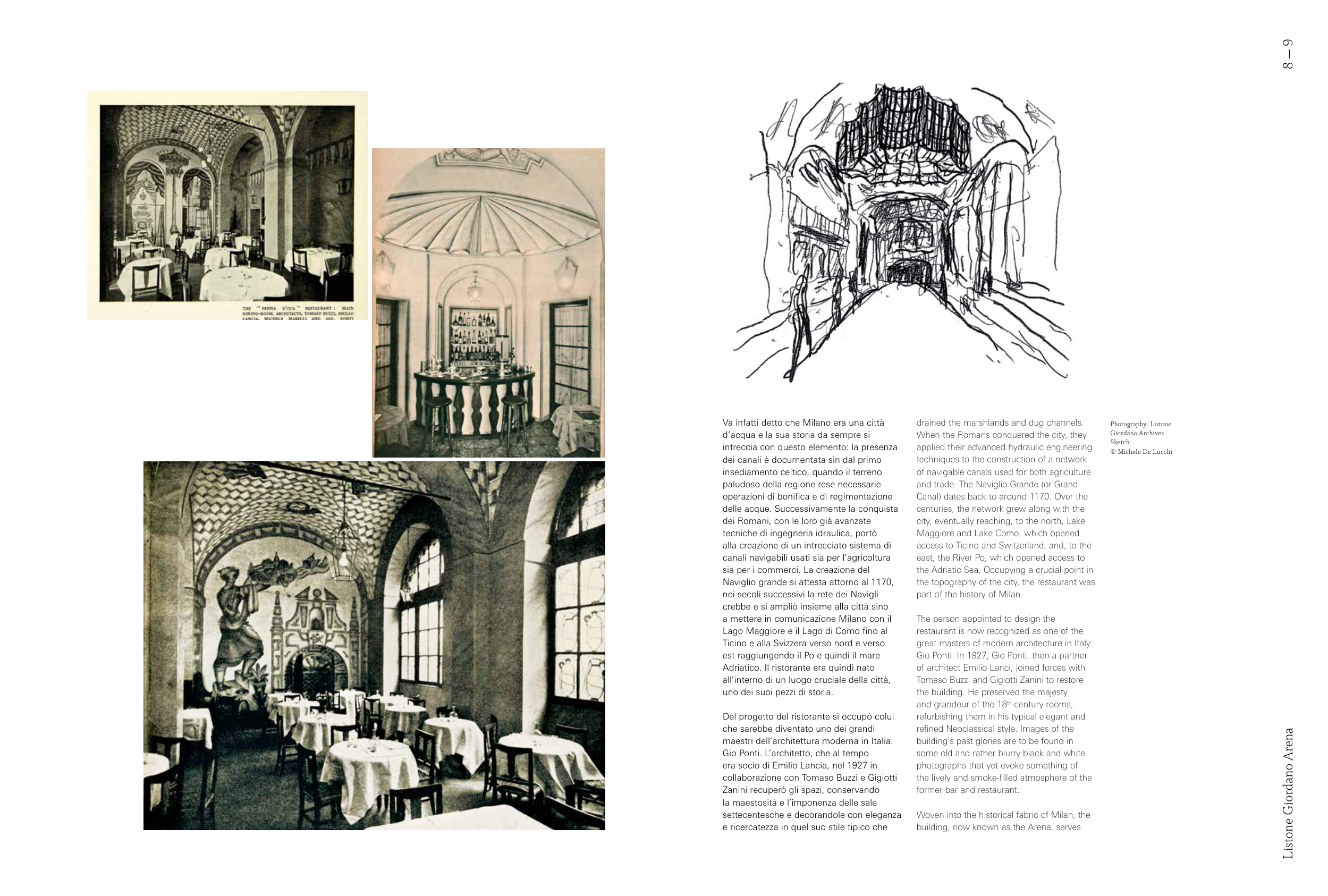8 — 9
Listone Giordano Arena
Va infatti detto che Milano era una città
d’acqua e la sua storia da sempre si
intreccia con questo elemento: la presenza
dei canali è documentata sin dal primo
insediamento celtico, quando il terreno
paludoso della regione rese necessarie
operazioni di bonifica e di regimentazione
delle acque. Successivamente la conquista
dei Romani, con le loro già avanzate
tecniche di ingegneria idraulica, portò
alla creazione di un intrecciato sistema di
canali navigabili usati sia per l’agricoltura
sia per i commerci. La creazione del
Naviglio grande si attesta attorno al 1170,
nei secoli successivi la rete dei Navigli
crebbe e si ampliò insieme alla città sino
a mettere in comunicazione Milano con il
Lago Maggiore e il Lago di Como fino al
Ticino e alla Svizzera verso nord e verso
est raggiungendo il Po e quindi il mare
Adriatico. Il ristorante era quindi nato
all’interno di un luogo cruciale della città,
uno dei suoi pezzi di storia.
Del progetto del ristorante si occupò colui
che sarebbe diventato uno dei grandi
maestri dell’architettura moderna in Italia:
Gio Ponti. L’architetto, che al tempo
era socio di Emilio Lancia, nel 1927 in
collaborazione con Tomaso Buzzi e Gigiotti
Zanini recuperò gli spazi, conservando
la maestosità e l’imponenza delle sale
settecentesche e decorandole con eleganza
e ricercatezza in quel suo stile tipico che
drained the marshlands and dug channels.
When the Romans conquered the city, they
applied their advanced hydraulic engineering
techniques to the construction of a network
of navigable canals used for both agriculture
and trade. The Naviglio Grande (or Grand
Canal) dates back to around 1170. Over the
centuries, the network grew along with the
city, eventually reaching, to the north, Lake
Maggiore and Lake Como, which opened
access to Ticino and Switzerland, and, to the
east, the River Po, which opened access to
the Adriatic Sea. Occupying a crucial point in
the topography of the city, the restaurant was
part of the history of Milan.
The person appointed to design the
restaurant is now recognized as one of the
great masters of modern architecture in Italy:
Gio Ponti. In 1927, Gio Ponti, then a partner
of architect Emilio Lanci, joined forces with
Tomaso Buzzi and Gigiotti Zanini to restore
the building. He preserved the majesty
and grandeur of the 18th-century rooms,
refurbishing them in his typical elegant and
refined Neoclassical style. Images of the
building's past glories are to be found in
some old and rather blurry black and white
photographs that yet evoke something of
the lively and smoke-filled atmosphere of the
former bar and restaurant.
Woven into the historical fabric of Milan, the
building, now known as the Arena, serves
Photography: Listone
Giordano Archives
Sketch:
© Michele De Lucchi


